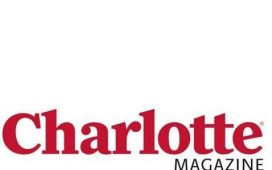HERE are 14 great starter classic cars for people starting off their vintage adventures, according to magazine Classic & Sports Car.
Ford Cortina MkIII
There is huge nostalgia associated with the model in all its forms and the Cortina MkIII is still very drivable, particularly if you’re into a more ‘urban’ style of classic – with the irony factor of the vinyl roof.
They’re easy enough to own, but parts supply can be patchy for these sort of ‘everyday’ Fords, compared to an MG or a Triumph.
Porsche 924
The original affordable Porsche (then and now), the 924 was the firm’s first front-engined, water-cooled sports car.
There are still plenty about and prices start at around £3,500. Spend £20,000 and you’ll be buying the very best, possibly even a Turbo, the model that gave the 924 some real credibility.
Pre-1980 versions with a four-speed box are probably worth avoiding, but either way these are easy cars to live with, so long as you can keep the rust at bay.
Triumph Herald and Vitesse 1959-’71
One of several Triumph starter classic candidates, the Herald was a light-to-drive four-seater with positive rack and pinion steering; its principle claim to fame was its amazing turning circle.
They’re particularly attractive and great fun in convertible form, and cheap too: you can pick one up from about three to four grand.
Volvo Amazon and 140 Series
Starting at £5-6000 for a running project, these big Volvos make a great first classic, with excellent survival rates and a fine record for reliability and rust resistance.
Four-door Amazons offer top value as estates, while two-doors are relatively rare. Leave the early pre-1962 versions with the 6-volt electrics and drum brakes to collectors: you want the bigger 1800 engine, 90mph-plus top speed, disc brakes at the front and overdrive if possible, which means mid-’60s onwards.
MGB
The pretty, practical MGB is possibly the ultimate first classic sports car; built ruggedly and in huge numbers they are simple to work on, easy to drive and very usable, with possibly the best parts and club support of any old car.
The rubber-bumper roadsters produced from 1974 onwards start at £3000 or less, while project MGB GTs are available for under two grand. Spend £10-15k, meanwhile, and you’ll buy yourself a really nice ’60s roadster.
Austin A40 ‘Farina’ 1959-’67
The beginning of BMC’s association with Pininfarina, the Austin A40 was an angular, modernist replacement for the A30/A35. Built for nine years it was also, in Countryman form, the pioneer British hatchback.
Less plentiful – but also less twee – than a Morris Minor, the traditionally engineered A40 doesn’t have the ‘icon’ cachet of a Mini and is thus relatively cheap; prices start at £3,000 for a runner.
Volkswagen Golf Mk1 and Mk2
The classic ’70s origami hatchback, significant in that it marked the point at which Volkswagen finally got its act together and fully moved on from the Beetle with this class-leading, class-defining, transverse-engined, water-cooled, front-drive car.
It’s much fancied in its original GTI form, but you get much better value (and lower insurance costs) if you settle for one of the more pedestrian four-door versions. The Mk2 GTIs, meanwhile, are still affordable hot-rod shopping baskets, and particularly nice if you can find one with power steering.
Mercedes-Benz W114 and W123 1968-’76
If you have German leanings then the W114 and W123 Mercs are a good place to start, on account of their classic three-box/chrome bumper look and the solid feel of their superb engineering, which will likely give you a taste for all things Mercedes-Benz.
The 1968-’76 cars are arguably the most interesting of them, but not so easily found. Whichever model you go for, though, these are pretty bombproof first classics – so long as you avoid the thirst and complication of six-cylinder, twin-cam 280 versions.
Rover P6 2000 1963-’77
One of the best British saloons of the ’60s, the 2000, which you might also see listed as the P6, was really our answer to the Citroën DS.
With clean, distinctive and modern styling, a sophisticated chassis and base-frame construction that enabled all the panels to unbolt (thus making them easy to bodge), it was deservedly popular.
These refined, undervalued cars remain in plentiful supply and can be found for about £5000 and upwards today.
Fiat 500 and 600
It’s hard to ignore the appeal of a classic 1957-’65 Fiat 500 at £5000, but most of the ones you’ll find are left-hand drive and might scare you off when you get behind the wheel.
Frankly, the driving experience is more akin to that of garden machinery than a motor car as we know it today, with barely noticeable acceleration and lots of noise and vibration from its twin-cylinder engine.
These are quite a bit less numerous in the UK, of course, but if you follow the rear-engined Fiat line of thought there’s always the notchback 850, which is a significant step up in refinement and probably has the best handling of all the rear-engined ‘people’s cars’. Though harder still to find, they do tend to come cheaper.
Triumph Spitfire
Triumph made plenty of starter classic candidates, including the aforementioned Herald/Vitesse, but for the maximum price-to-enjoyment ratio look no further than the Spitfire.
There’s not much power beneath the bonnet, but it’s light enough to offer sporty performance regardless.
You can buy one today for as little as £2000, if you go for one of the less collectable 1500 models; early cars are quite sought after and will you set you back £15-20,000 or even more.
BMW 3 Series E30
With BMWs of earlier generations seemingly either hard to find or commanding the sort of money that hardly squares with the ‘starter classic’ ethos, we have to look to the ’80s models to find good cars in decent supply at sensible prices.
Of these, the ever-popular E30 3 Series seems the best bet, particularly if you restrict yourself to ‘cooking’ 316 and 318 versions that have led gentle lives in the hands of well-heeled, elderly owners: you might even find a convertible, such as the 325i.
Humber Sceptre 1963-’67
Rootes cars tend to be somewhat forgotten now, but they were nicely styled and considered a cut-above your Fords and Austins back in their day.
Of the ’60s four-cylinder cars, the Humber Sceptre, based on the much more utilitarian Super Minx, was the most glamorous, with its swept-back roofline, quad headlights and sporty dash. The Sceptre has something of the appeal of a Rover P5B coupé, but they’re cheaper to run and start at only £5000 for a nice one.
Volkswagen Beetle 1970-’77
Though lacking the charm of the 1950s and ’60s cars (which tend to command strong money), the ’70s 1302/1303/1303S Beetles with the wraparound windscreens are faster and easier to live with.
What’s more, they survive in sufficient numbers that they look cheap next to Minis and almost anything with a Ford badge from the same period. They’re also, arguably, preferable to any of the two-cylinder Citroën family.
Though not universally loved, the Beetle is undeniably reliable – as long as you resist the urge to tune them – nicely made and different enough in look, sound and feel to have strong classic appeal.








